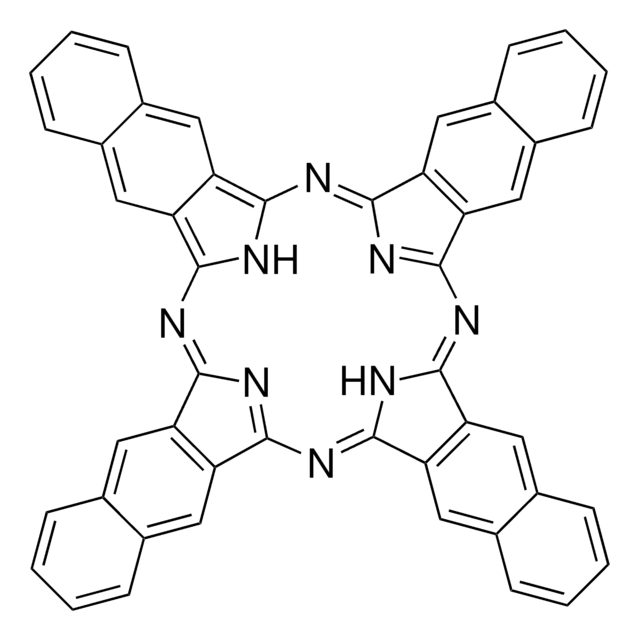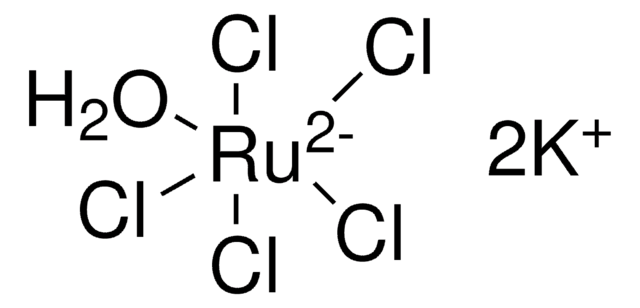About This Item
추천 제품
양식
powder
mp
>400 °C
λmax
735 nm in chloronaphthalene
789 nm in chloronaphthalene
830 nm in chloronaphthalene
SMILES string
[SnH2]1n2c3nc4nc(nc5n1c(nc6nc(nc2c7cc8ccccc8cc37)c9cc%10ccccc%10cc69)c%11cc%12ccccc%12cc5%11)c%13cc%14ccccc%14cc4%13
InChI
1S/C48H24N8.Sn/c1-2-10-26-18-34-33(17-25(26)9-1)41-49-42(34)54-44-37-21-29-13-5-6-14-30(29)22-38(37)46(51-44)56-48-40-24-32-16-8-7-15-31(32)23-39(40)47(52-48)55-45-36-20-28-12-4-3-11-27(28)19-35(36)43(50-45)53-41;/h1-24H;/q-2;+2
InChI key
SCYVSSHNBKWAKE-UHFFFAOYSA-N
유사한 제품을 찾으십니까? 방문 제품 비교 안내
일반 설명
애플리케이션
신호어
Warning
유해 및 위험 성명서
Hazard Classifications
Eye Irrit. 2 - Skin Irrit. 2 - STOT SE 3
표적 기관
Respiratory system
Storage Class Code
6.1C - Combustible acute toxic Cat.3 / toxic compounds or compounds which causing chronic effects
WGK
WGK 3
Flash Point (°F)
Not applicable
Flash Point (°C)
Not applicable
가장 최신 버전 중 하나를 선택하세요:
활성 필터
자사의 과학자팀은 생명 과학, 재료 과학, 화학 합성, 크로마토그래피, 분석 및 기타 많은 영역을 포함한 모든 과학 분야에 경험이 있습니다..
고객지원팀으로 연락바랍니다.









